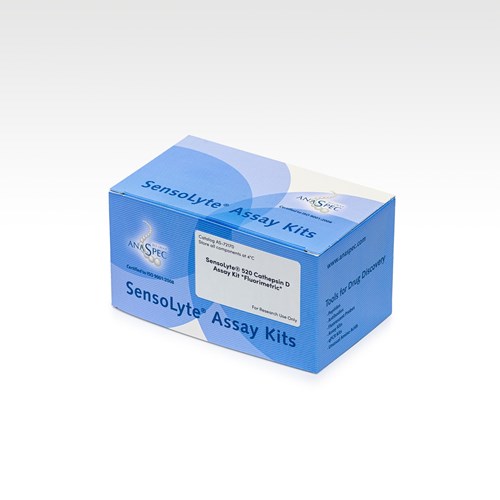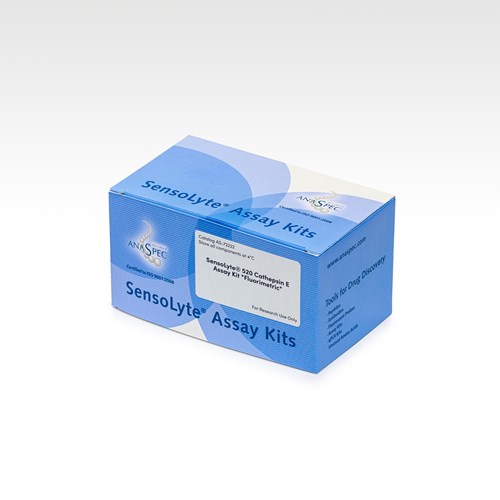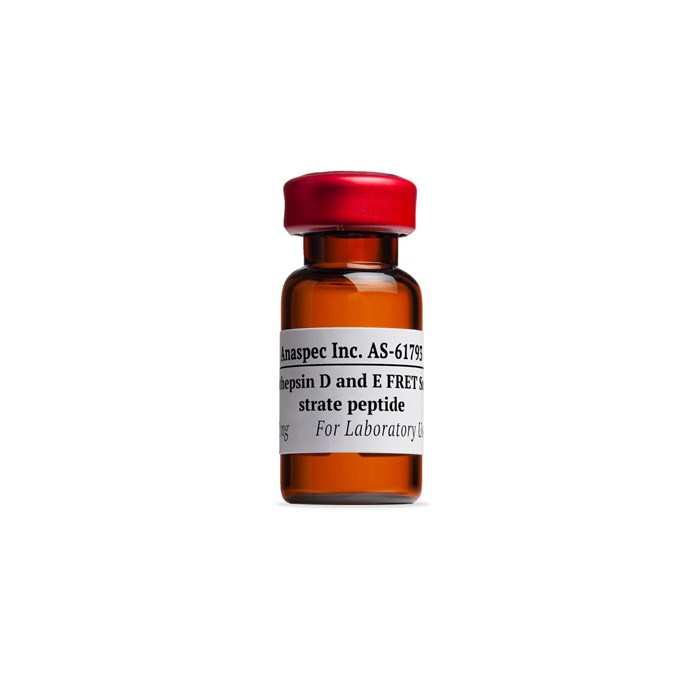Cathepsin D and E FRET Substrate - 1 mg
- Cat.Number : AS-61793
- Manufacturer Ref. :
-
Availability :
In stock
Cathepsins are a class of globular lysosomal proteases, playing a vital role in mammalian cellular turnover. They degrade polypeptides and are distinguished by their substrate specificities. Cathepsin D is the lysosomal aspartic proteinase, active in intracellular protein breakdown. Cathepsin D is involved in the pathogenesis of several diseases such as breast cancer and Alzheimer disease. Cathepsin E is a non-lysosomal aspartic proteinase of the pepsin superfamily. It plays an important role in the protein degradation, the generation of bioactive proteins, and antigen processing. Recent studies have particularly suggested that Cathepsin E is important in host defense against cancer cells and invading microorganisms.
This peptide is an internally quenched fluorogenic substrate (Ab/Em =328/393 nm) for cathepsins D and E and not for B, H or L, obtained from the hepatopancreas (liver) of the Japanese common squid (Todarodes pacificus). The cleavage occurs at the Phe-Phe amide bond resulting in enhanced fluorescence and is used in screening cathepsin D and E inhibitors and for determining cathepsin D and E activity in tissue cell extracts.
Specifications
| Chemistry | |
| Sequence one letter code |
|
|---|---|
| Sequence three letter code |
|
| Molecular Mass/ Weight |
|
| Properties | |
| Absorbance (nm) |
|
| Emission (nm) |
|
| Modification | |
| Conjugation type |
|
| Modification Name | |
| Conjugation |
|
| Quantity & Purity | |
| Purity |
|
| Storage & stability | |
| Form |
|
| Storage Conditions |
|
| Activity | |
| Application | |
| Biomarker Target | |
| Detection Method | |
| Research Area | |
| Sub-category Research Area | |
| Usage |
|
| Codes | |
| Code Nacres |
|
Downloads
You may also be interested in the following product(s)



